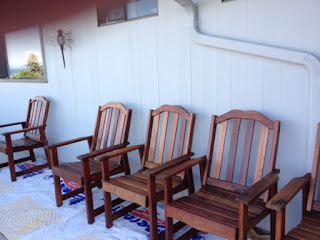Restoration prolongs the lifespan of wood furniture to spare homeowners the trouble and expense of acquiring new furniture every so often. The first step to furniture restoration is cleaning. If a piece of furniture is not clean, no amount of wax or oil will make a difference.
7 Easy Steps in Restoring Old Wood Furniture
1. First, clean the furniture with a good wood cleaner. Some brands of oil soap work many times with a fine grade of steel wool. You will want to use a very light touch with the steel wool until you have discovered how dirty or soiled the furniture is. A lot of time a wax buildup is a part of the problem. Allow furniture to dry. There are other mixtures and solutions available on the market.
2. Once the furniture is dry, the surface may appear to be robbed of all color but this will depend on the type of finish and type of wood. Any furniture oil is good to go. Start oiling the wood by putting the oil in a bowl and painting it on the wood. Let the oil soak in. You may need to do this several times. Once you have an even look to the wood finish, repeat the same procedure with the use of lemon oil that you buy at the grocery store. But use it with a fine steel wool, going over all the wood. This will take down any uneven places and get the wood ready for the next step, which is the Tung oil. .
3. The purpose of Tung oil is seal the much hydrated piece of wood furniture. Go over the furniture with tung oil. A light layer will do. Let this set for about six hours and then repeat the process. Tung oil is the safest way to take care of furniture, and it can be used in almost every case. No harmful fumes to breathe.
4. After you have cleaned, oiled and sealed the piece of furniture, the final step is to wax it. Wax it several times a year and your furniture will give you a lifetime of use and can be passed on to generations after generations.
5. If you want a brighter shine on your furniture, you can go for varnish instead of wax. In that case, start by washing an inconspicuous part of a piece with soapy water to see what comes off. Then flow on semi-paste stripper, heavily but gently, with a rag swab. Wait an hour and when the chemical has raised the paint, push off the coating. When almost all the old finish is safely in the goo bucket, ease off the remainder with No. 2 steel wool and rub the piece dry with a rag.
6. Remove the softened paint with wooden scrapers, string, and a wooden-handled brush, let the surface dry, and brush any remaining gunk out of the crevices with the toothbrush. Allow the article you’re working on to dry for a day or more. Then rub it with No. 2 steel wool. Finally, dust the piece well with a rag, giving special attention to details.
7. Let the finished job dry a day before you varnish it, but you can get the same effect by rubbing and dusting a surface carefully with a cloth. Then swab on the finish with a lint-less rag. Make haste slowly, work the coating in well and be sure that no excess is left on corners and edges. Let the piece dry thoroughly, dust it again, and apply another layer.
Note:
Repeat the whole process as often as you want but keep those coats light! The result will be a beautiful low-sheen protective coating, very hard and waterproof, which looks and feels like an expensive oil finish.





